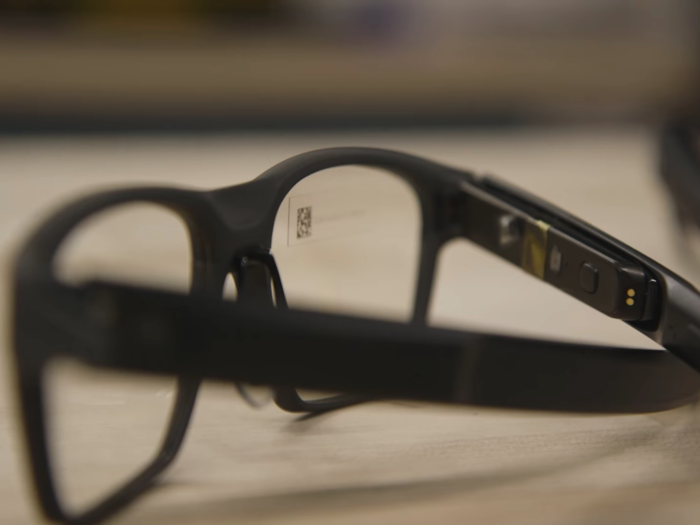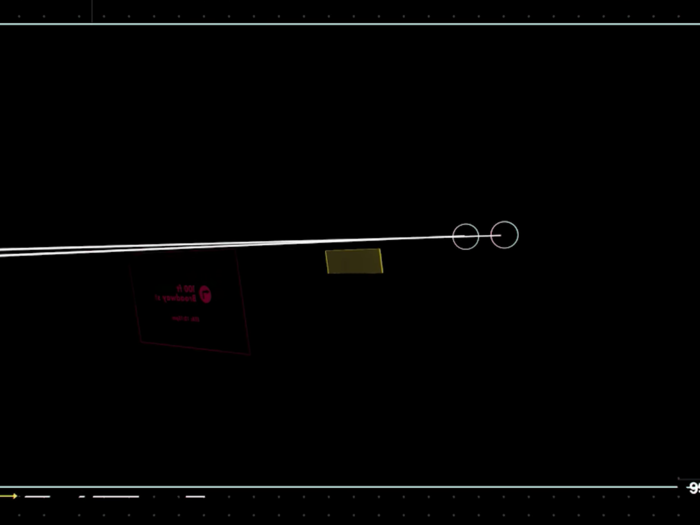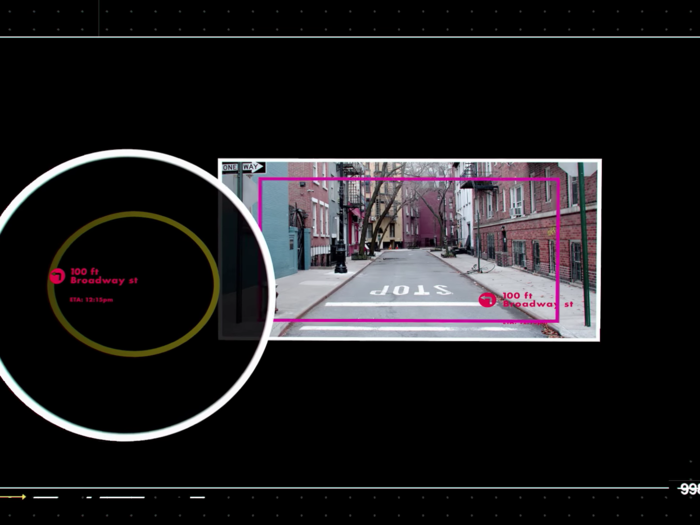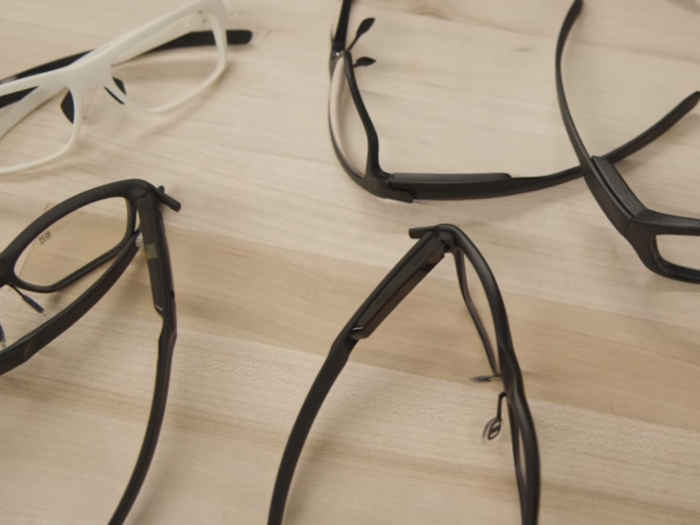The image is called a retinal projection: A red monochrome projector shines an image on a "holographic mirror," which bounces the image into your eye.
To avoid having text in your line of sight all the time, Intel built the glasses so that the dashboard shows up only when the user glances down at the bottom of the frame.
The second the user looks up, the display disappears. There's no need for hand gestures.
The display is shown through a "Vertical-Cavity Surface-Emitting Laser," which is "so low-power, it's at the very bottom end of a class-one laser," according to New Devices Group's industrial design director Mark Eastwood. That apparently means that the laser is safe for your eyes.
The glasses do need to be fitted to your eyes, however, so there's enough distance between your eyes and the lens to see what's displayed.
Intel is developing other prototype Vaunt styles, and developers will soon be able to start using the glasses through Intel's early access program, to create use cases for them.
The Vaunt is going to work with both Android and iPhone. And while the executives in the video do name a few use cases (grocery shopping, choosing between restaurants that are right in front of you), it's clear that the extent of the Vaunt's capabilities will be entirely up to software developers.





